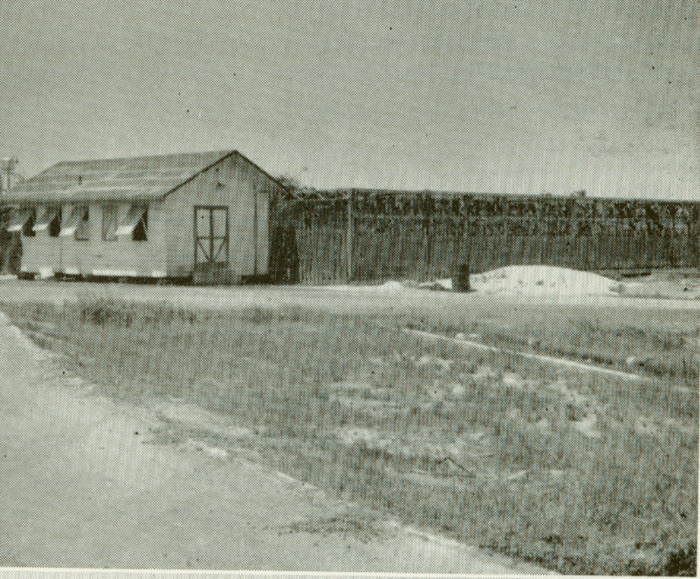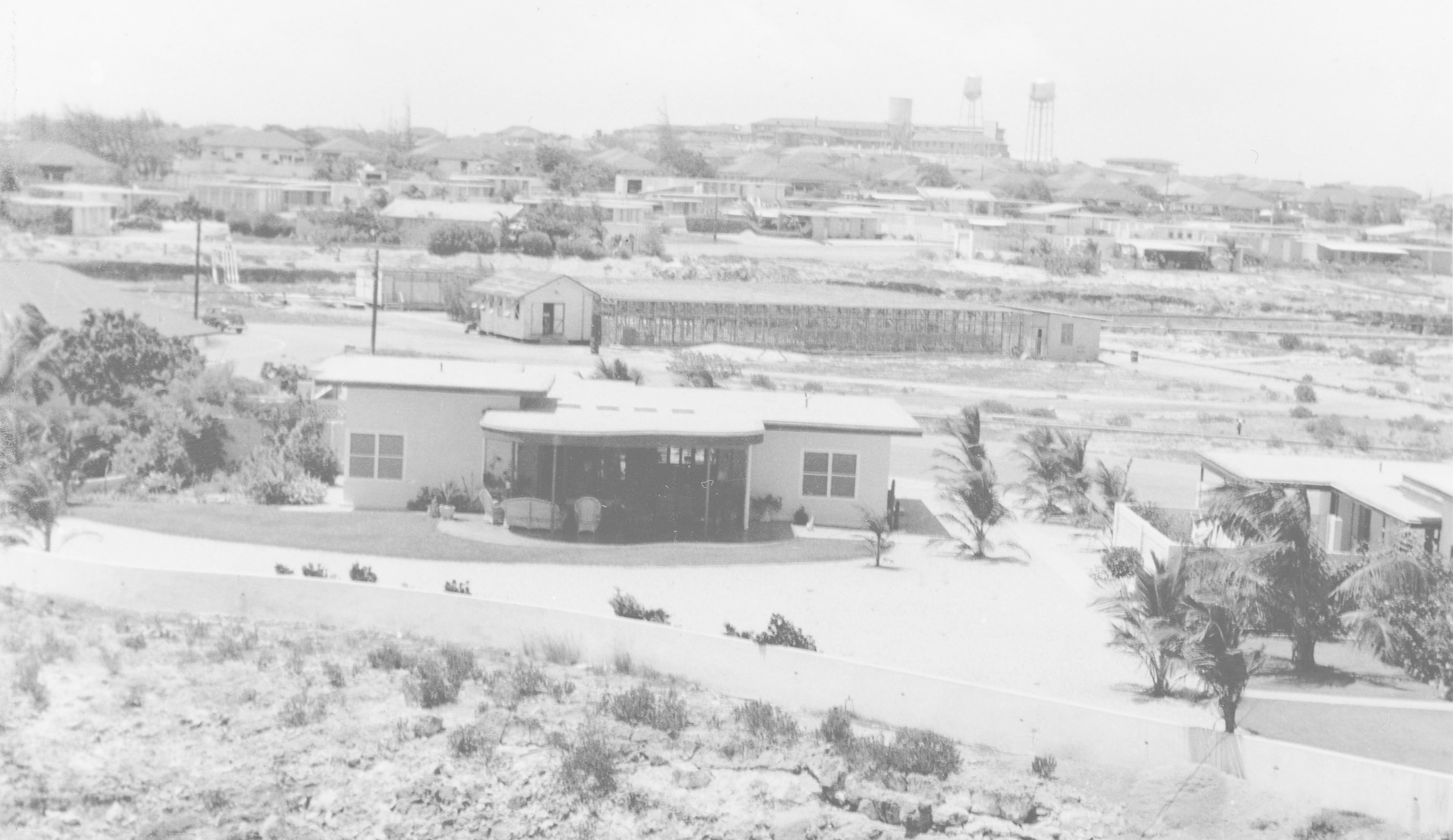EARLY HYDROPONICS

This photograph of the Hydroponics (it was called a soil-less culture in the Lago Publication in 1946) facility was taken from the 1952 Pan-O-Ram.


SOIL-LESS CULTURE
The Colony has had in operation since March 20, 1945, a soil-less garden which turns out at various intervals limited crops of fresh perishable vegetables for sale at the Colony Commissary.
The object of the garden is the production of a local supply of fresh tomatoes, lettuce, and limited other crops for Lago employees and their families. The local output provides a much fresher supply than that shipped from the United States. This method of supply cuts down greatly the possibility of spoiled or partly spoiled products.
The soil-less or gravel culture method is employed because local conditions make ordinary truck gardening out of the question. Lack of good soil and water combined with excessive heat and abundance of harmful insects make ordinary soil culture nearly impossible. However, in a soil-less conditions these factors can be controlled.
The soil-less method employs the use of water tight beds, filled with crushed gravel into which plants are set. The plants are fed by passing a chemical solution through the gravel. It is from the solution itself that the plants take all their food needs.
| RETURN TO SUPPORT FACILITIES | RETURN TO LAGO COLONY MAP |